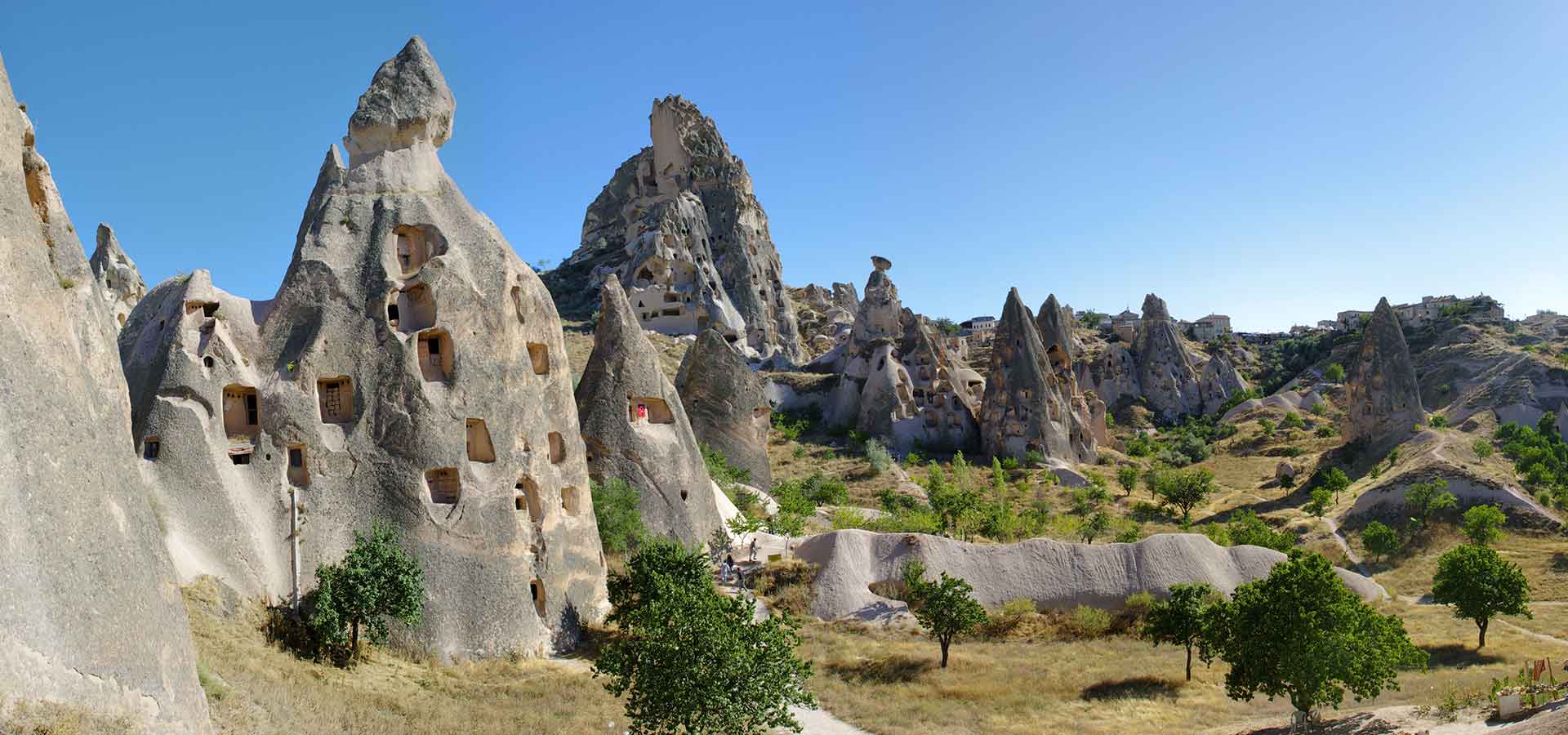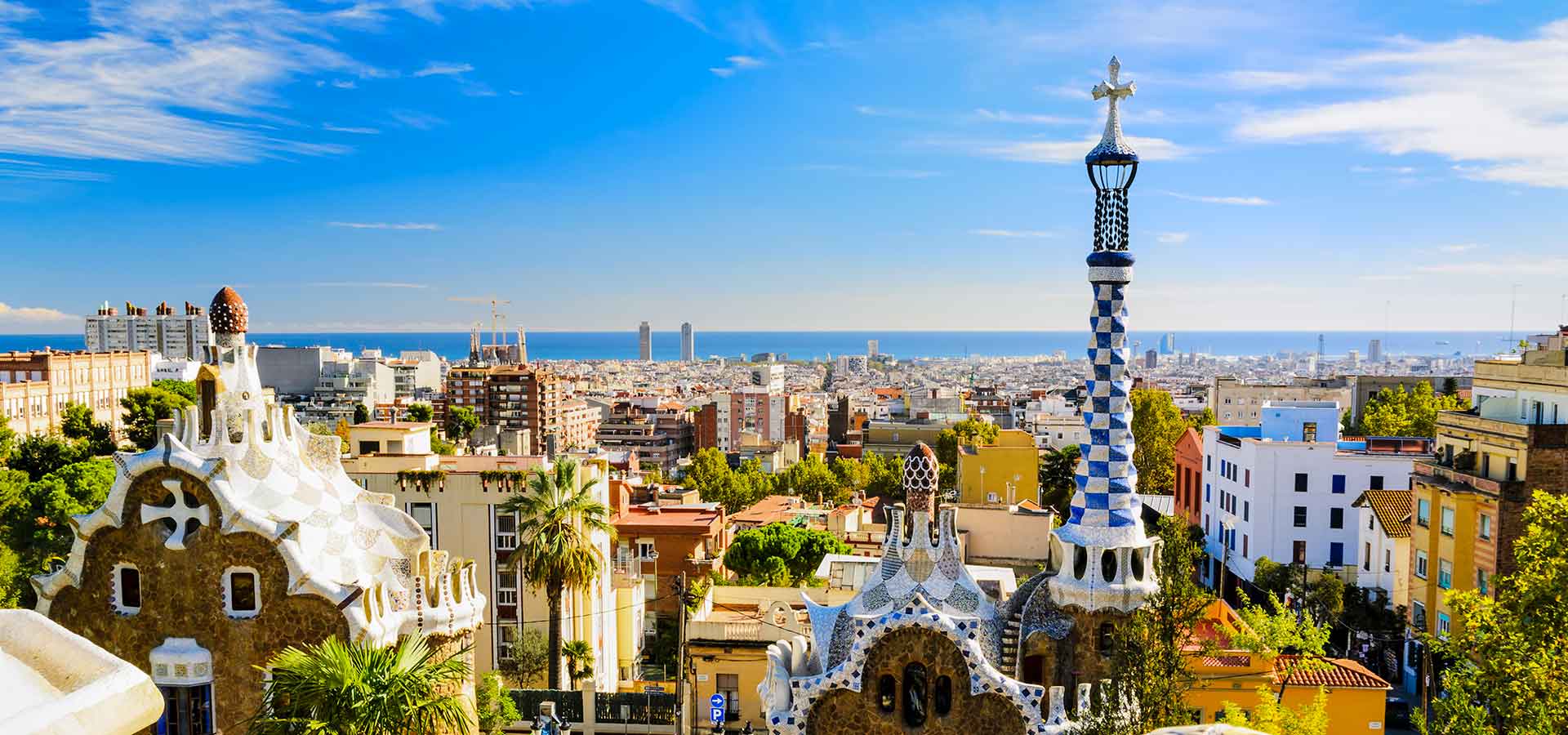Europe Discovery About a destination
When we think of the UK, several things may come to mind such as royalty, the Brexit, Shakespeare, pubs, the Beatles, a sometimes not-so-nice weather, fish and chips, Downtown Abbey and more… Legally, the UK is a unitary state that includes four nations: England, Scotland, Wales and Northern Ireland. For two centuries, the UK was the world’s largest empire. A unique place filled with beautiful landscapes and strong traditions. Pour yourself a cup of tea for this overview of the key landmarks of this North Sea Island where the Union Jack flies!

Worldly recognized as one of UK’s capital most famous landmarks, Tower Bridge is a bascule bridge that spans the River Thames and whose construction was finished in 1894. It has the same architectural style as other great monuments found in the City District, such as the London Tower and the Westminster Palace. With two bridge towers connected by a pedestrian walkway and a deck that rises to let boats pass, this Gothic Revival-style bridge is easily recognizable. Originally powered by pressurized water, the raising mechanism was converted to an electro-hydraulic system in 1976. During its construction in the Victorian era, the bridge was considered an engineering masterpiece and was part of the industrial and commercial development that put London among the most sought-after cities in the world. You can admire this amazing structure during a panoramic tour of the capital.

This major institution undoubtedly deserves the landmark of knowledge. As the first English-speaking university, Oxford holds the title of the world’s most prestigious university since 2017, in front of Cambridge, Stanford and Harvard. It welcomes no fewer than 24,000 carefully picked students from all over the world in 38 colleges. Oxford’s campus is rich in history. You can tell by the beauty of its Gothic Revival buildings, the green areas dedicated to PhD graduates, the circular library, the Bridge of Sighs—a reminder of its Venetian cousin—and the Turf Tavern, whose foundations date back to 1381. It might even make you consider going back to school!

Listed as a UNESCO World Heritage site, Stonehenge is one of the world’s most important megalithic sites. This mysterious and fascinating monument has been drawing visitors for nearly 5,000 years. Legends aside, this archeological icon holds an impressive mystery. How could these rising stones, weighing up to 25 tons, have been carried over 30 km? Was this a sacred location where rituals would take place, or maybe a scientific observation spot to study the moon and sun’s influence? One thing we can agree on; this is an immemorial trace of the past whose complexity and beauty can be admired most notably at sunrise and sunset.

The York Minster cathedral can be found in the heart of one of England’s most beautiful medieval cities. With its architecture and history, the largest gothic cathedral of Northern Europe has what it takes to be the ultimate religious landmark. The first stone church is said to date back to the 7th century, but as you know, every era of history brought its fair share of challenges and instabilities. Through the centuries, churches were burned, rebuilt, destroyed and built again, every time bearing the new conqueror’s architectural trademark. That’s the case with the York Minster, which features many architectural gems you’ll be able to admire during your visit, such as the world’s largest stained-glass expanse. The clarity of the place and the abundance of details will surely amaze you.

Steeped in history, Edinburgh Castle is a reminder of Scotland and England’s heated past. This sumptuous fortification listed as a UNESCO World Heritage site embraces the rock it sits on above the city. Formerly a fortress, then a royal residence and later a prison and military residence, it has always been in use. It’s one of the few castles to have been in use for 1,000 years. Today, one of its museums is home to the Scottish Crown Jewels. For the daring ones, a visit to the dungeons will send chills down your spine. Thousands of inmates were locked there in terrible conditions, most notably during the Seven Years’ War and the Revolutionary War. And like any true Scottish castle, it is rumoured to be haunted. Although we also know that the Scottish people have mastered the art of legends and ghost stories…

Also known as “The Misty Isle”, the Isle of Skye is a great reflection of Scotland’s wild beauty. When the fog seeps in, it gives the island a mysterious and enchanting atmosphere. From afar, the island seems to be floating between the sea and the clouds. With its rugged coastline, many cliffs and green slopped hills, you’ll quickly understand how its otherworldly landscapes may amaze more than one. Driving through the narrow and winding roads, you’ll come across many “lochs”, a typical British Gaelic term for lake or inlet. Thanks to sites such as the Cuillin—a range of rocky mountains—and the impressive cliffy landscapes of Trotternish and Neist Point, you’ll be reminded that the world’s beauty lies in the power of nature and that we’re sometimes pretty small in comparison.

This museum is a tribute to the RMS Titanic and its passengers who sank in the Atlantic Ocean on the night of April 14, 1912. The museum was built on the former shipyard where the legendary ship was built. You’ll learn more about the Titanic’s story, from its construction to its tragic sinking. Through special effects, recreations and original artifacts, you’ll be immersed in the euphoria of the 20th century’s industrial era. In this modern and interactive museum, you’ll also get a glance of the day-to-day life of Belfast’s inhabitants at the time, with shipyards and linen spinning mills. The story of the Titanic is known all around the world, and in our opinion, is a perfect example of the human paradox. Wanting a ship at the forefront of technological and industrial evolution that tragically ends up at the bottom of the ocean in its first few days. Isn’t that the exact definition of a paradox? “A statement that, despite sound reasoning, leads to a conclusion that seems self-contradictory.”

Let’s finish it off with one of the world’s most impressive natural sites; Giant’s Causeway. Listed as a UNESCO World Heritage site, this volcanic formation dates from the Tertiary Era and forms a spectacular sight on Northern Ireland’s coast. No fewer than 40,000 hexagonal basalt columns look as if they had been laid out there, creating the illusion of a giant causeway that disappears into the sea. That would be the scientific explanation, but by now you’ll have guessed that there’s also a legend the Irish love to tell. The famous duel between two giants, where one’s cleverness led to the other’s fleeing… We won’t say anything more, except that the highlight of this story remains the beauty of this stunning natural scenery whose “once upon a time” dates back way further than you can imagine.
The array of UK’s must-sees is much longer than this short list of landmarks. Whether you want to follow in the Beatles’ footsteps, sip on whisky in a distillery, listen to someone play the bagpipes, enjoy an afternoon tea, wear Scottish tartan or even a kilt, the British culture has a wonderful heritage and deep-rooted traditions you’ll have the pleasure to discover. The UK is yours!

Après avoir accompagné des gens pendant plus de 40 ans dans différents domaines, un nouveau chapitre s’est ouvert à moi chez Traditours en mai 2017. Depuis, c’est avec un dynamisme et une passion débordante que j’accompagne les groupes dans les différents circuits et croisières. Chaque voyage est pour moi une occasion unique de rencontrer des gens uniques.

Italy’s been written about so much that we sometimes feel like we’ve seen everything there is to see and that the famous boot has nothing left to..

Turkey is a place of contrasts. Connecting Europe and Asia, it’s where the East and the West converge. The charm of this land has been around for..

With 48 locations listed as UNESCO World Heritage sites, it’s no surprise that Spain is one of the world’s most visited countries. This wonderful..